Stage One: Towns Along the Route
The Tour de France’s Stage One takes the riders on a mostly flat, 185km loop
from the centre of Lille back to the city.
EXPLORE THE RICH HISTORY OF LENS
Located in the Hauts-de-France region, Lens is a town that blends industrial heritage with modern culture, making it an intriguing destination for first-time visitors. Once known primarily for coal mining, Lens has reinvented itself as a vibrant cultural hub, most notably with the opening of the Louvre-Lens Museum in 2012.
Begin your visit with the Louvre-Lens, a striking glass and steel structure set in a former mining area. The museum showcases masterpieces on loan from the Louvre in Paris and presents them in a unique, open layout. Entry to the permanent collection is free, and it’s a must-see for art lovers and curious visitors alike.
The Parc de la Glissoire and Parc du Louvre-Lens offer relaxing green spaces ideal for a walk or picnic, while the city center features welcoming cafés, bakeries, and local shops. Don’t miss trying some local dishes or beers from the region.
Lens also has a strong community spirit and is home to passionate football fans — if you come back to Lens on a match day, consider catching a game at the Stade Bollaert-Delelis, home to RC Lens; famous for its fanatical supporters.
With its cultural treasures, warm atmosphere, and powerful history, Lens offers a rewarding experience for every visitor.
To understand Lens’s past, visit the Centre Historique Minier in nearby Lewarde or explore the town’s own mining history at the 9-9bis Mining Site, a UNESCO World Heritage site. These places offer insight into the life and struggles of the miners who shaped the town’s identity.
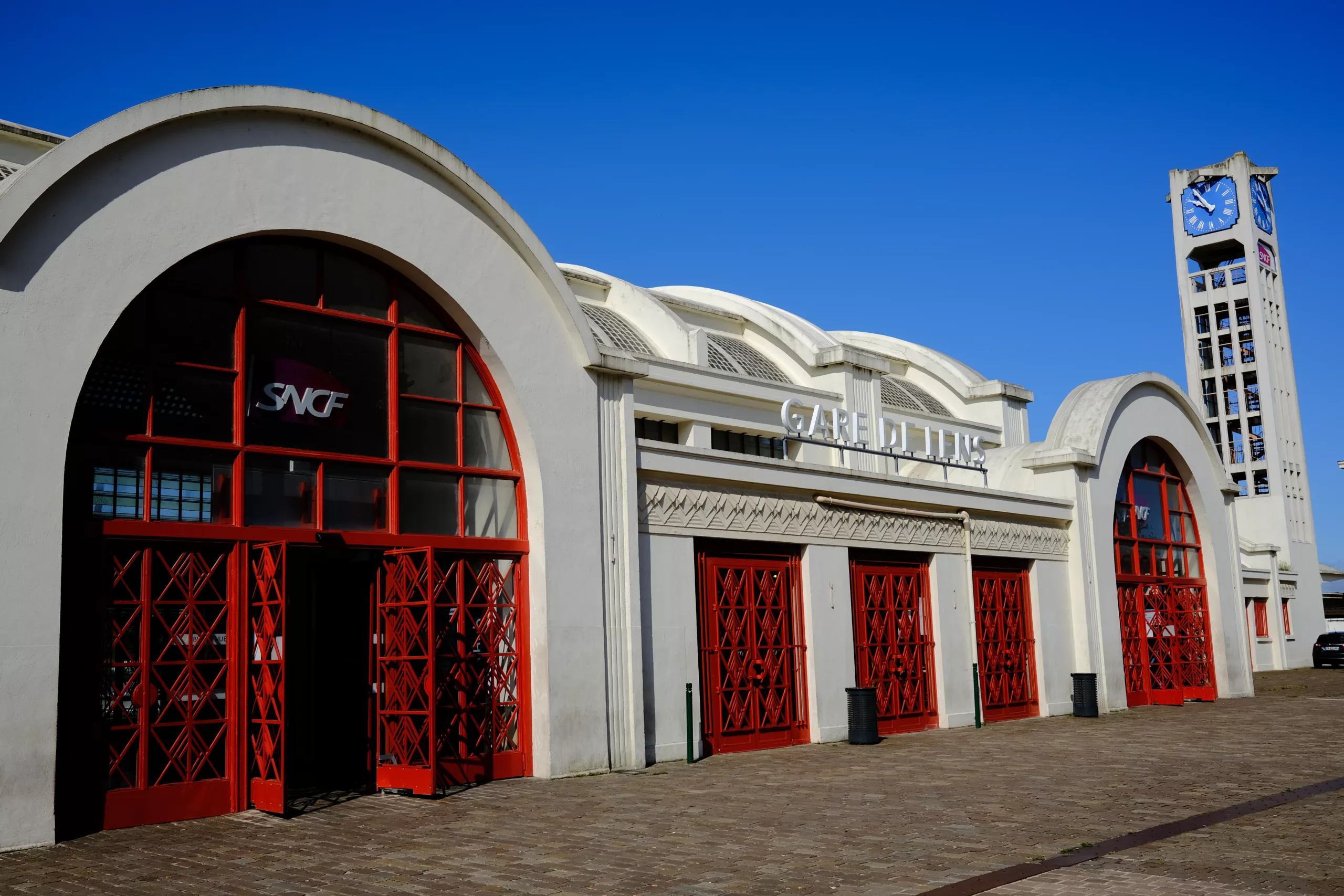
Gare de Lens
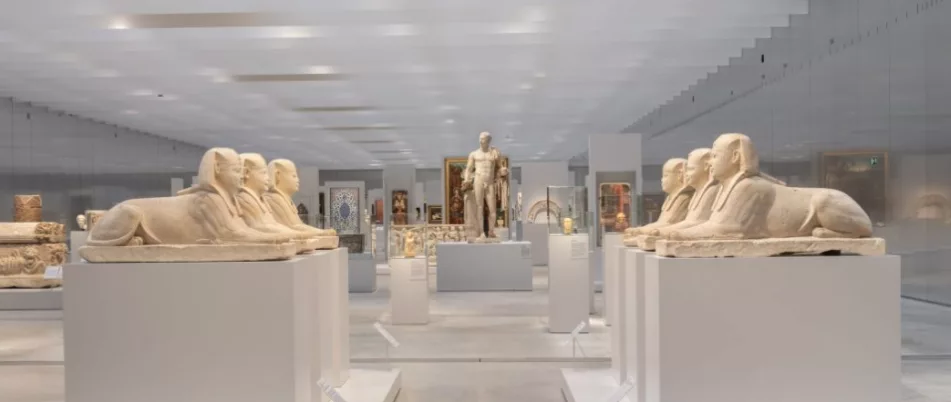
The Louvre-Lens. Unmissable.
MINING AND MORE IN LIEVEN
Located just a few kilometers from Lens, Liévin is a welcoming town in the Pas-de-Calais region, known for its rich mining heritage and evolving cultural scene. For a first-time visitor, Liévin offers an authentic taste of Northern France, with a mix of local charm, history, and green spaces.
Historically a coal mining town, Liévin played a significant role in the industrial growth of the region during the 19th and 20th centuries. Today, it honors that legacy while looking toward the future. One of the most symbolic places is the nearby 9-9bis Mining Site, shared with Lens, which celebrates the area’s UNESCO-listed mining past through exhibitions, concerts, and events.
Liévin is also a town of sport and music. The Arena Stade Couvert, one of the largest indoor stadiums in France, hosts major athletic competitions, concerts, and cultural events. If you’re lucky, you might catch an international meet or a live performance during your stay.
Nature lovers will enjoy the town’s parks and nearby countryside, perfect for a walk or bike ride. The Parc de la Souchez and other green spaces provide peaceful escapes within the urban setting.
Though smaller than nearby cities, Liévin has a strong sense of community and regional pride. Local cafés and bakeries offer a warm welcome and delicious specialties like the famous tarte au sucre.
Whether you’re exploring its industrial roots or enjoying its modern energy, Liévin offers a meaningful and authentic stop in the heart of northern France.
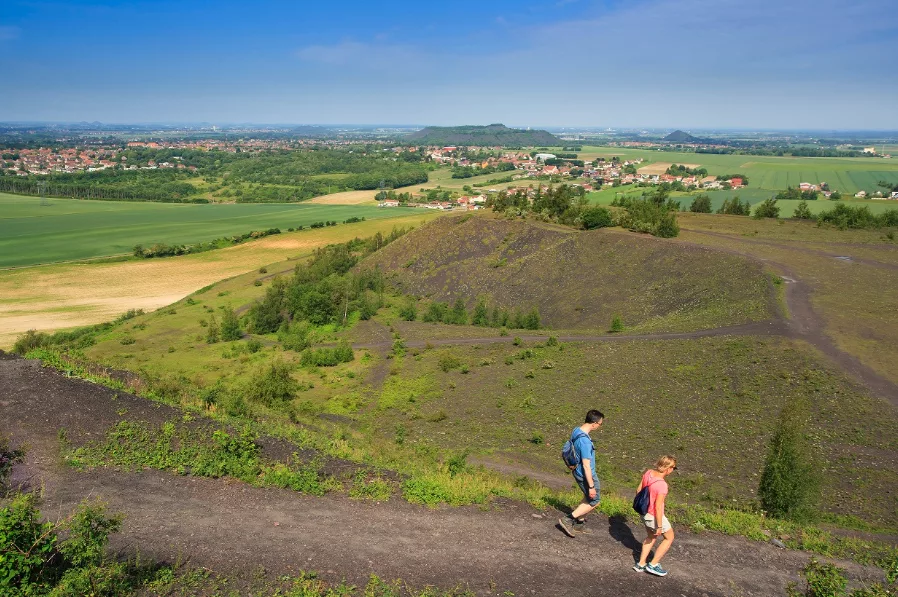
Terrils. Old mine spoil heaps are dotted across this area
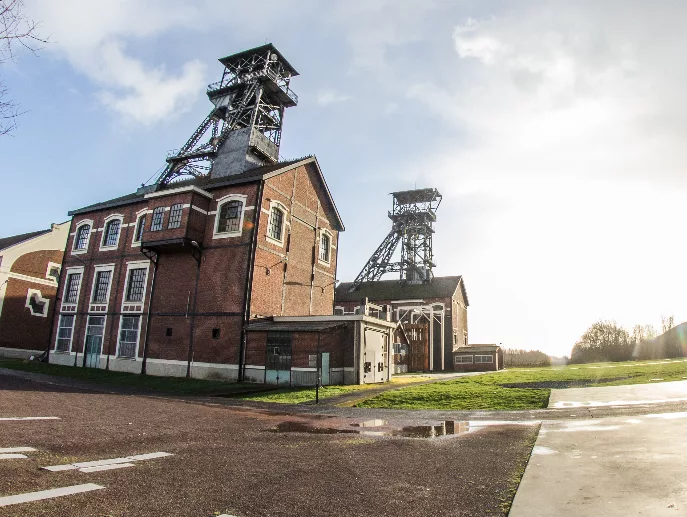
The old pithead of 9-9bis in Oignies
SURROUNDED BY HISTORY AT NOTRE-DAME-DE-LORETTE
For a first-time visitor, Notre-Dame-de-Lorette is not just a place — it is a powerful journey through history, memory, and reflection. Located on a hill near the town of Ablain-Saint-Nazaire in northern France, this site is one of the most important World War I memorials in the country.
At the heart of the site stands the Basilica of Notre-Dame-de-Lorette, a serene and solemn building built in memory of the soldiers who died during the fierce battles fought in the Artois region. Nearby is the national necropolis, the largest French military cemetery, where over 40,000 soldiers are buried. Walking through the rows of white crosses and the peaceful grounds leaves a lasting impression on all who visit.
Next to the cemetery, the Ring of Remembrance (Anneau de la Mémoire) is a striking modern memorial that lists the names of 580,000 soldiers of all nationalities who died in the region — not grouped by nationality or rank, but in alphabetical order, symbolizing unity in sacrifice.
The entire site is surrounded by countryside and offers a tranquil yet emotional atmosphere, perfect for reflection. It’s also part of the Chemin de Mémoire, a route connecting major WWI memorials in the area, including Vimy Ridge and Souchez.
Visiting Notre-Dame-de-Lorette is a deeply moving experience, offering historical insight and a moment of quiet respect for those who gave their lives. It’s a must-visit for anyone interested in the history of France and the legacy of the Great War.

Ring of Remembrance
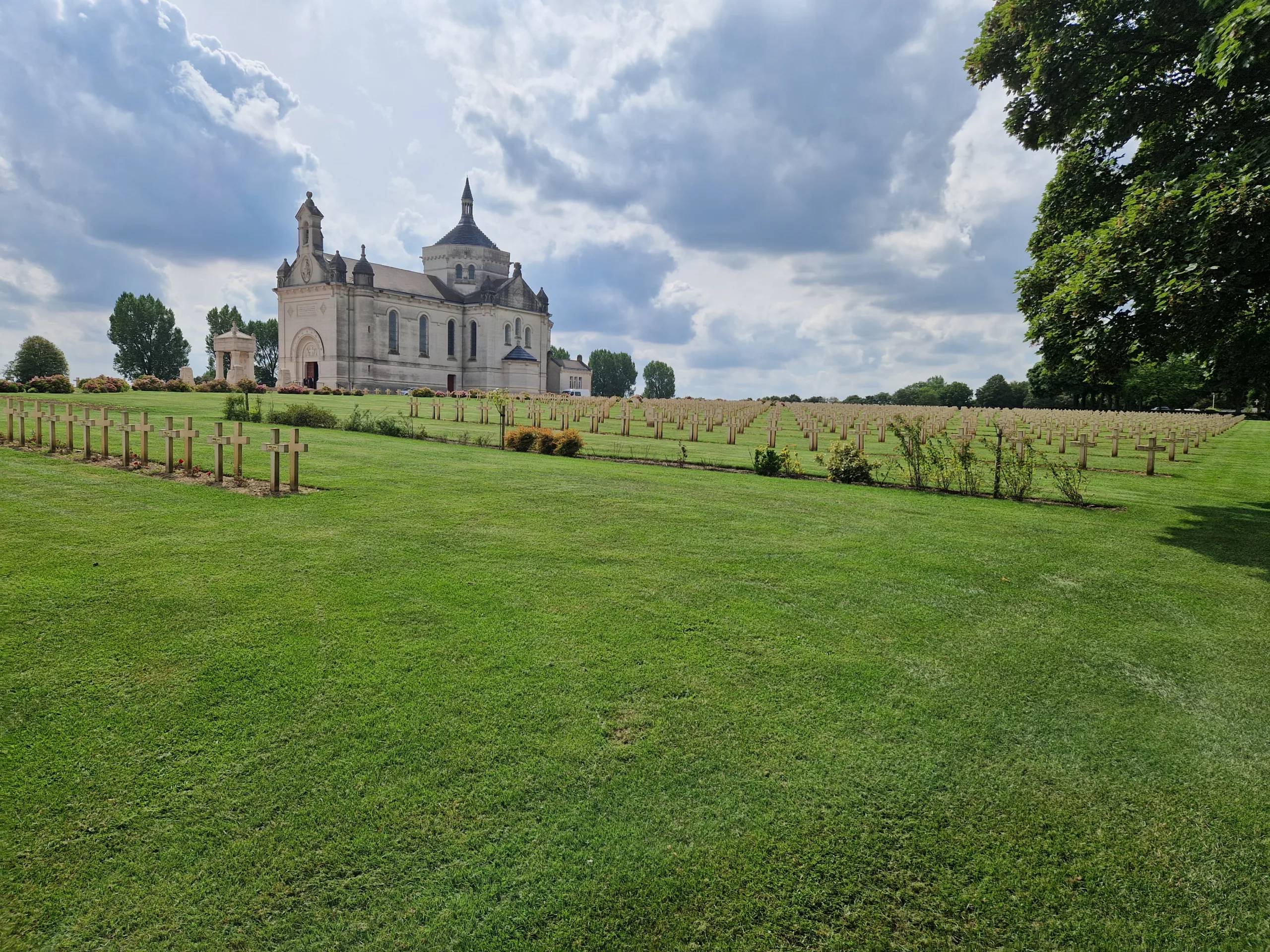
Notre-Dame-De-Lorette
EXPLORE ART DECO BETHUNE
Béthune is a lively and historic town in the Pas-de-Calais region of northern France, offering a perfect blend of culture, architecture, and warm local atmosphere. For a first-time visitor, it’s a great place to explore the charm of northern France beyond the larger cities.
Start your visit in the heart of the town at the Grand-Place, one of the most beautiful squares in the region. It’s surrounded by elegant Flemish-style buildings, cozy cafés, and shops. Dominating the square is the Béthune Belfry, a UNESCO World Heritage site. You can climb to the top for sweeping views of the town and surrounding countryside.
Béthune has a rich history, especially from the Middle Ages and both World Wars. It was heavily damaged during World War I but beautifully rebuilt in the 1920s, which gives the town its unique mix of styles — from Art Deco to Gothic. For more about its history, visit the Musée d’Ethnologie Régionale, which focuses on local traditions and everyday life in the region.
The town also hosts regular markets, music festivals, and cultural events. Don’t miss the chance to enjoy a meal in one of the many restaurants offering regional specialties like carbonade flamande or welsh rarebit.
With its friendly vibe, architectural beauty, and strong cultural identity, Béthune is an ideal stop for travelers looking to experience the authentic spirit of northern France.
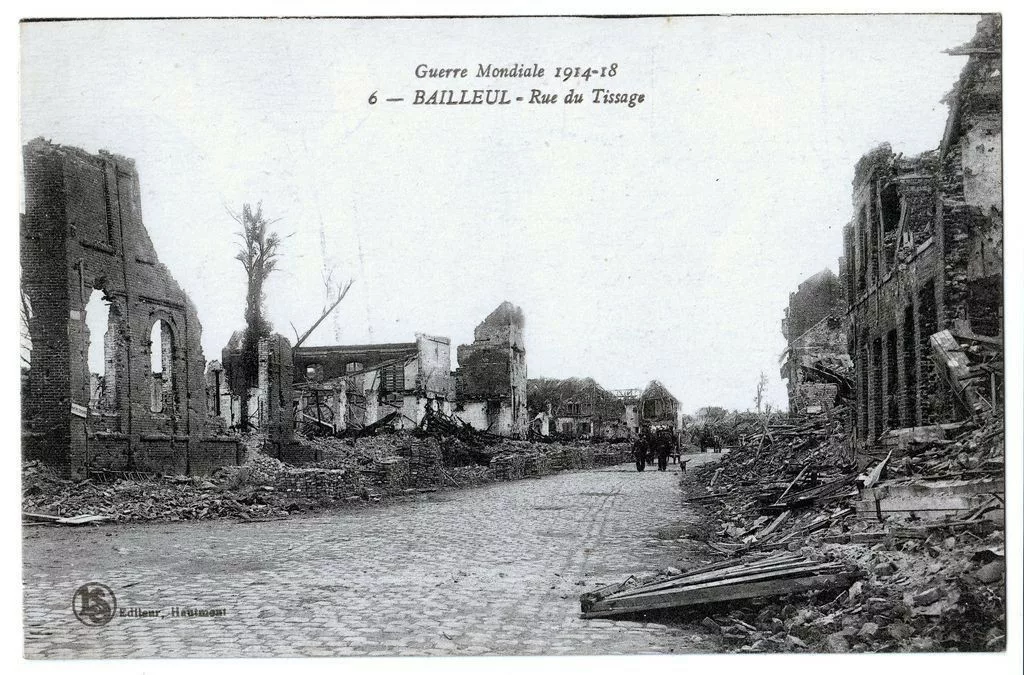
Bailleul in 1918
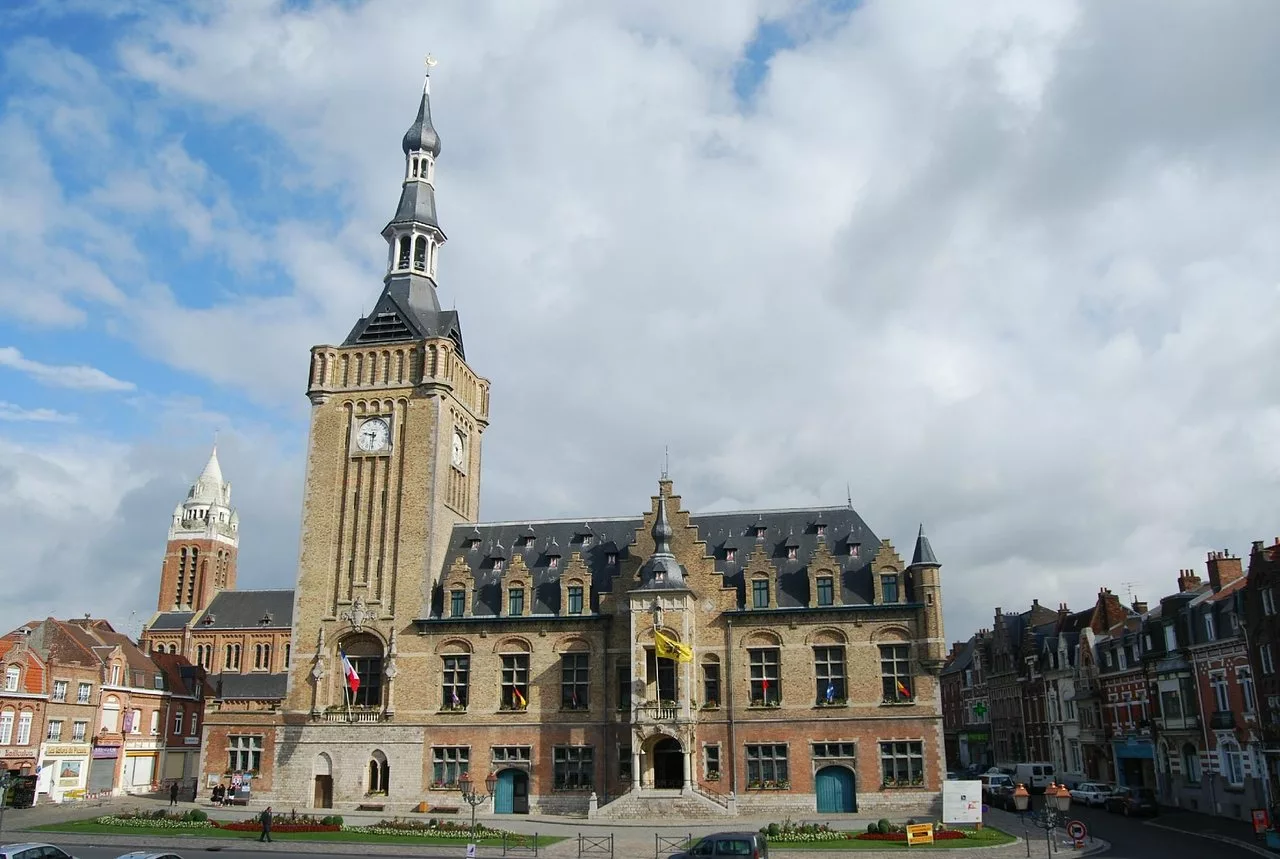
Bailleul Belfry
HAZEBROUCK
Located in the heart of French Flanders, Hazebrouck is a welcoming town that offers a mix of Flemish charm, rich history, and vibrant local life. For first-time visitors, it’s a perfect introduction to the culture and traditions of this unique region of northern France.
Begin your visit at the Grand-Place, the lively central square surrounded by cafés, shops, and historic buildings. The standout feature is the Town Hall with its impressive Flemish-style façade and belfry, which is listed as a UNESCO World Heritage site. Nearby, the Saint-Éloi Church showcases beautiful Gothic architecture and stunning stained-glass windows.
A must-see in Hazebrouck is the Musée des Augustins, housed in a former 17th-century monastery. It features collections of religious art, Flemish paintings, and local artifacts that help tell the story of the town and the wider Flanders region.
Hazebrouck is also known for its lively weekly market and traditional festivals that celebrate the area’s agricultural and cultural roots. Regional food is another highlight — try local specialties such as potjevleesch, Flemish waffles, and strong local cheeses.
Surrounded by green countryside and farmland, Hazebrouck offers peaceful walks and cycling routes, making it a good base for exploring rural Flanders. The town is also well connected by train to Lille, Dunkirk, and the coast.
With its warm atmosphere, cultural richness, and blend of French and Flemish influences, Hazebrouck offers a rewarding and authentic experience for any traveler discovering northern France.
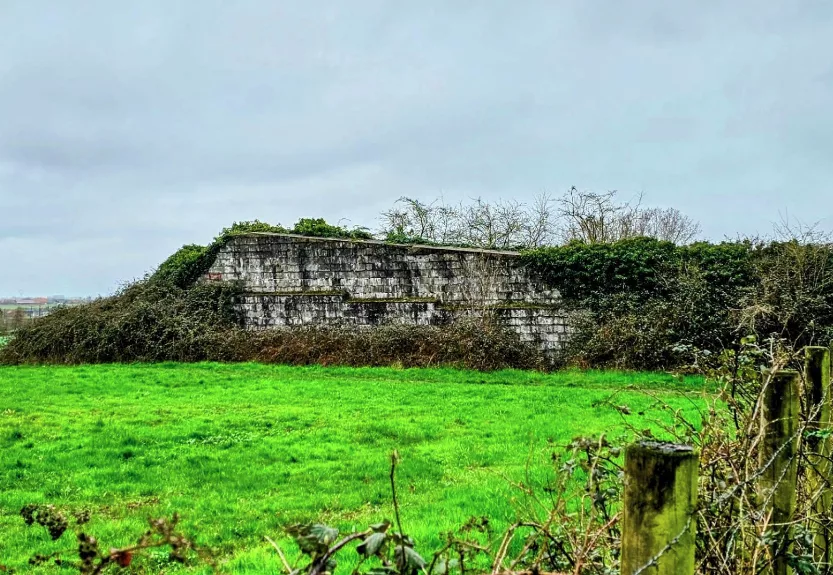
V1 rocket launchpad outside Hazebrouck
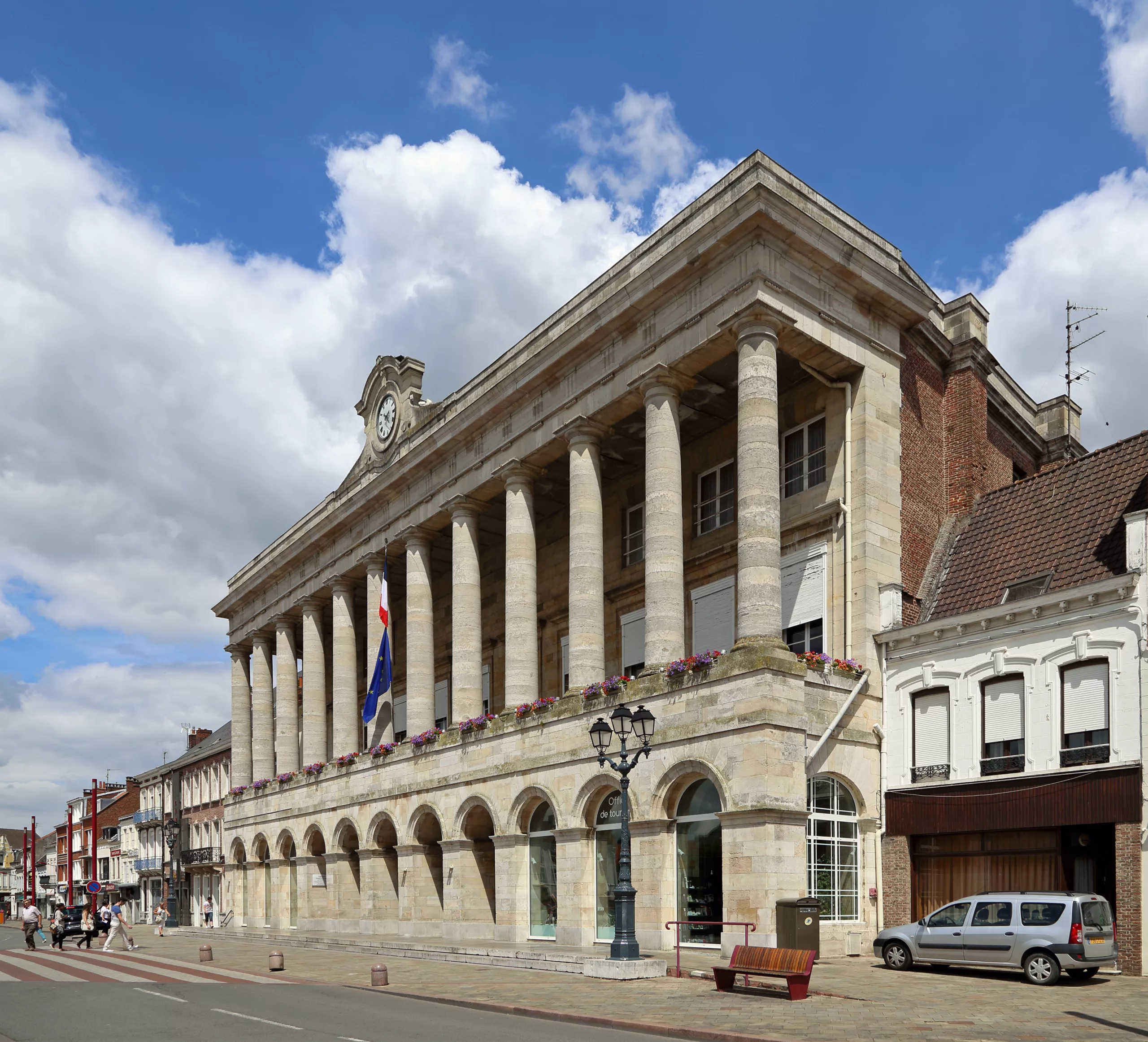
Place Rihour – Lille
DISCOVER THE CHARMS OF MONT CASSEL
A personal favourite. Nestled in the heart of French Flanders, the hilltop town of Cassel offers visitors a unique blend of history, charm, and panoramic views. As one of the highest points in northern France, Cassel provides sweeping vistas over the surrounding countryside — on a clear day, you can even see as far as the coast.
Start your visit in the Grand Place, the town’s central square lined with Flemish-style buildings, cafés, and shops. From there, wander the cobbled streets that lead uphill to the Jardin Public, a beautifully landscaped garden that was once part of the town’s former castle.
At the summit, don’t miss the moulin, or traditional windmill, which still turns in the breeze and adds to the town’s picturesque skyline.
Cassel is rich in heritage. Visit the Musée de Flandre, located in a 16th-century mansion, to explore the culture and history of the region through art, artifacts, and exhibitions. The museum highlights the town’s Flemish roots and its role throughout French history.
Throughout the year, Cassel hosts traditional festivals and events, including the famous Géants du Nord parade, where enormous papier-mâché figures fill the streets with music and celebration.
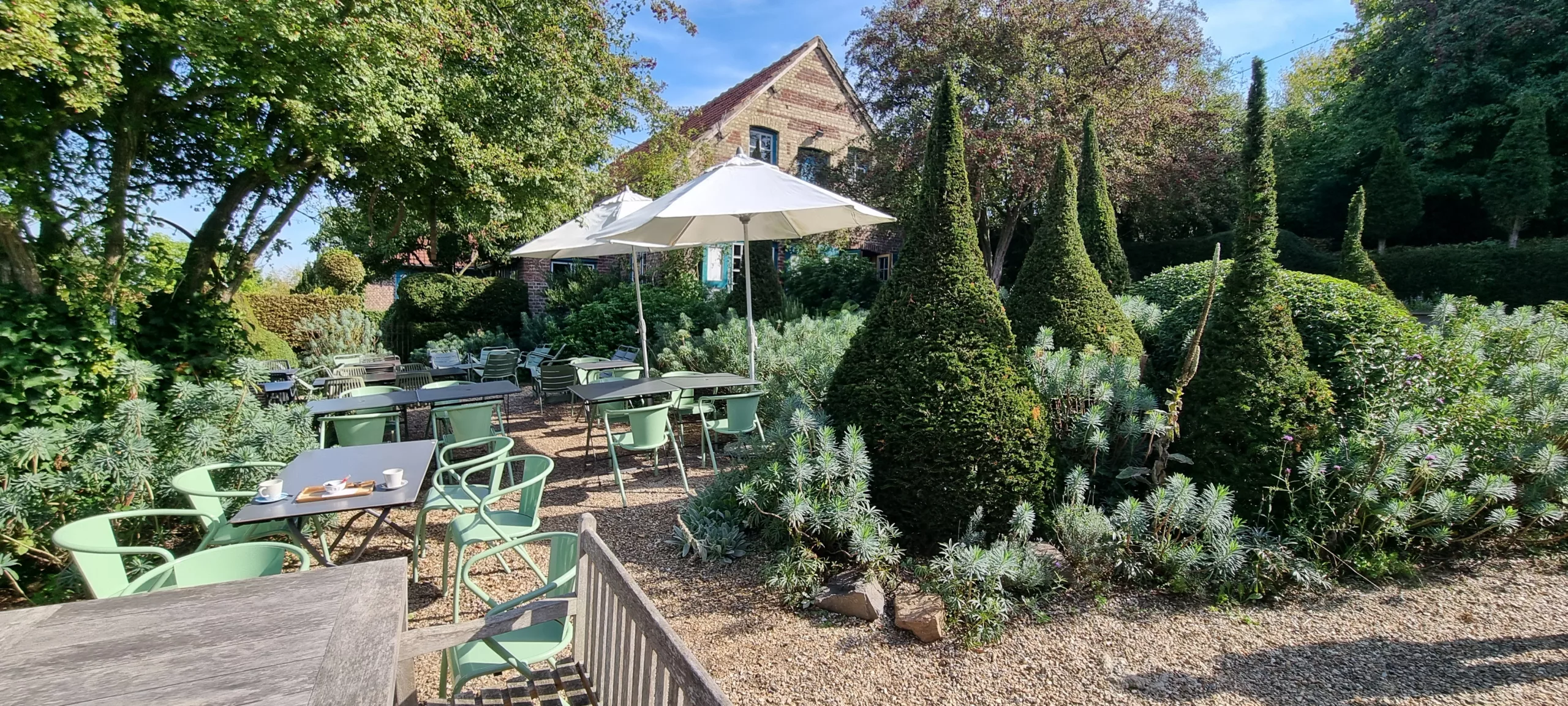
Restaurant/Cafe at the stunning Mont des Récollets Gardens in Cassel
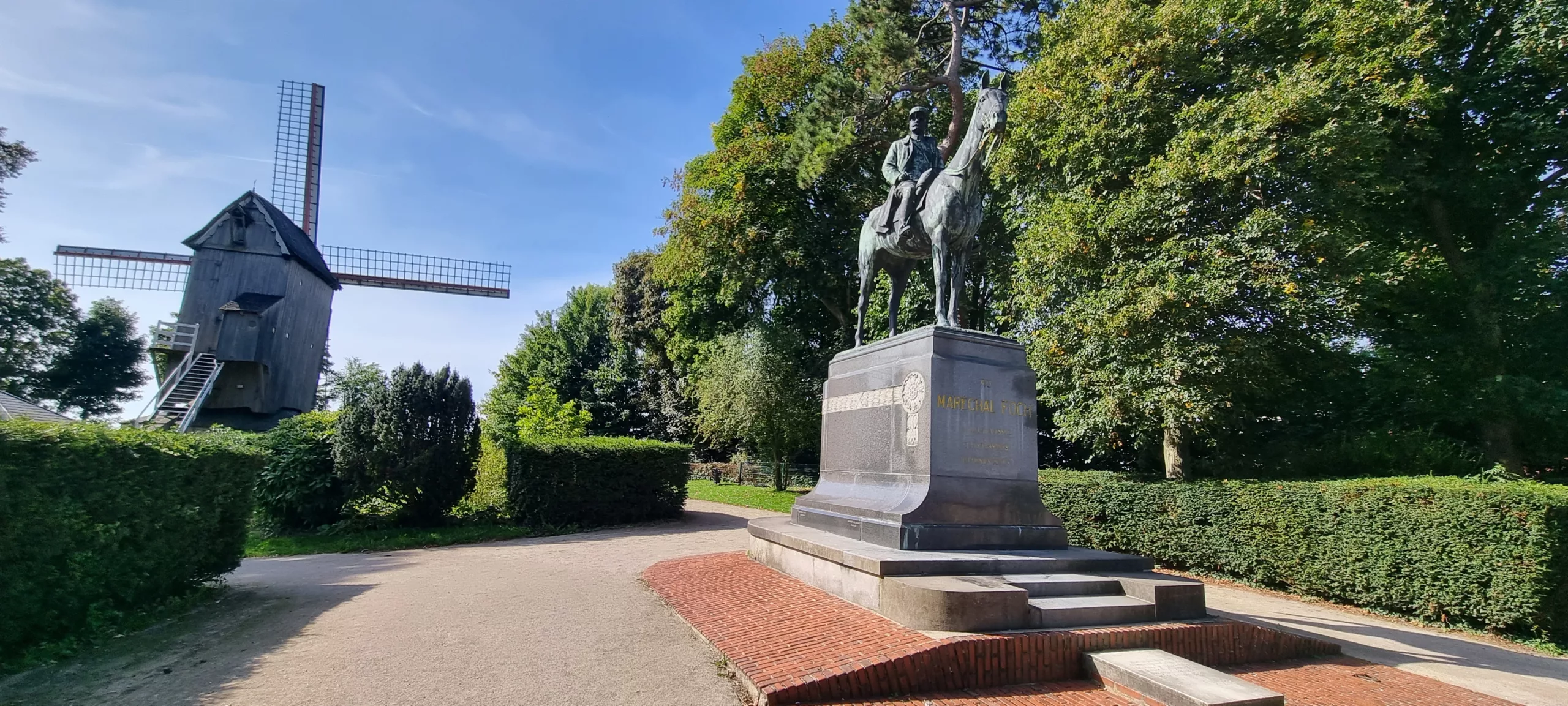
Moulin and statue of Ferdinand Foch at the summit.
PEACEFUL AND PICTURESQUE MONT NOIR
Tucked away in the scenic hills of French Flanders, Mont Noir is a peaceful and picturesque destination, perfect for nature lovers and those looking to explore the spiritual and culinary traditions of the region. Located near the Belgian border, this wooded hill offers walking trails, panoramic views, and a quiet escape from city life.
Mont Noir (Black Mountain) is named for its dense forest, which invites visitors to explore a network of trails ideal for hiking, cycling, or picnicking. At the summit, you’ll find views stretching across the Flanders plain. The area is also known for being the birthplace of the French writer Marguerite Yourcenar, whose former family estate is open to visitors as a museum and literary center.
Just a few kilometers away, don’t miss the Abbaye du Mont des Cats, a Trappist monastery founded in the 19th century. Nestled on a hilltop, the abbey is home to a community of monks who live according to the Rule of Saint Benedict, focusing on prayer, work, and silence.
One of the abbey’s most famous contributions is its Mont des Cats cheese, a rich and flavourful semi-soft cheese washed in brine, produced using traditional monastic methods. Visitors can stop by the abbey’s shop to buy cheese, local honey, and religious items, while enjoying the peaceful atmosphere.
Together, Mont Noir and the Mont des Cats Abbey offer a unique experience where nature, culture, and gastronomy come together in a serene, inspiring setting.
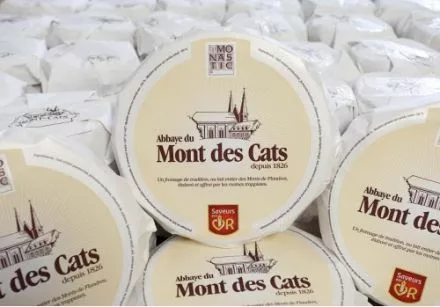
Mont de Cats cheese
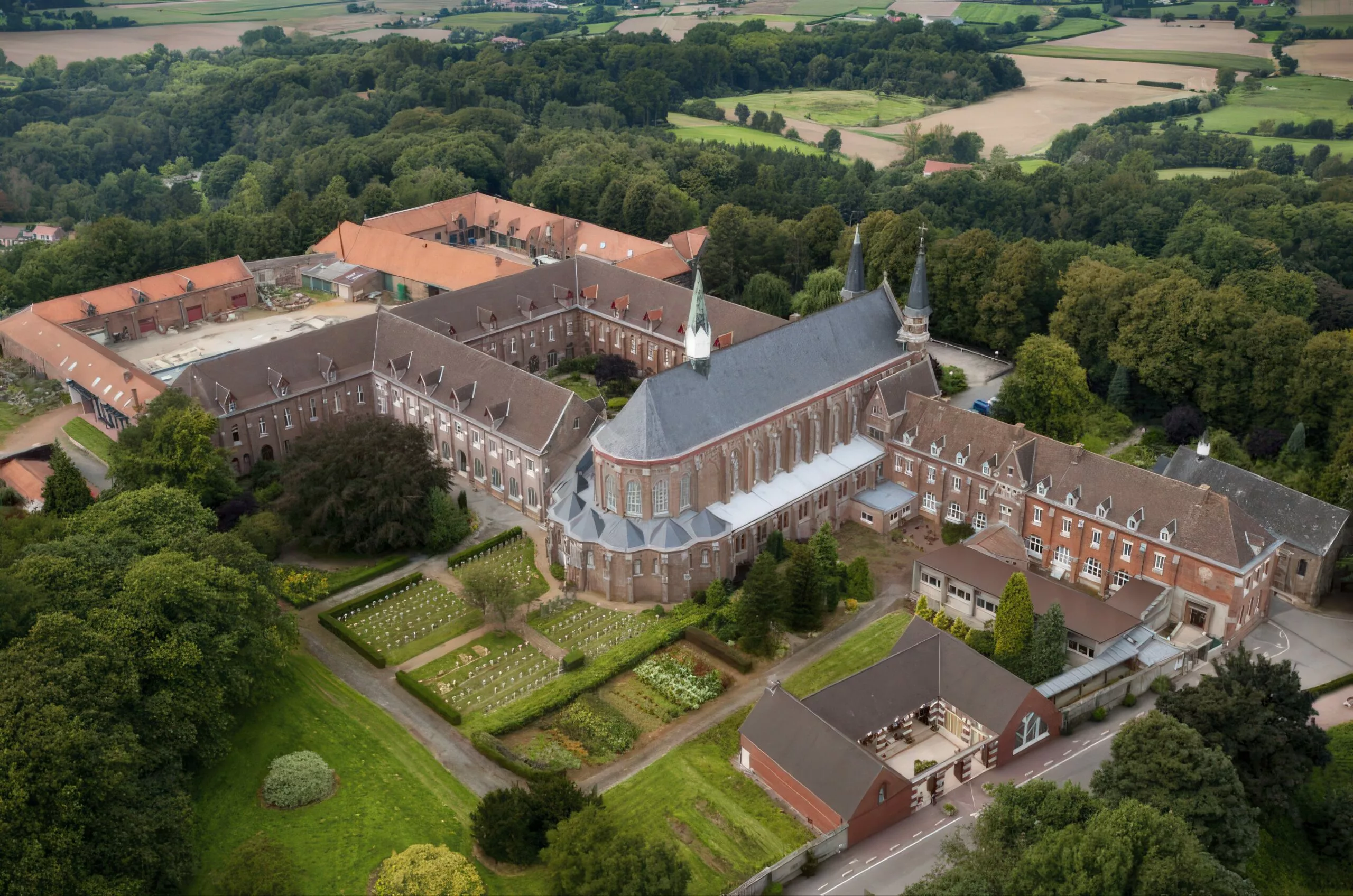
Abbaye du Mont des Cats
BELFRYS AND MORE IN BAILLEUL
Bailleul is a charming town in French Flanders, located near the Belgian border, and offers a rich mix of history, Flemish architecture, and local traditions. For first-time visitors, it’s a peaceful yet culturally vibrant destination that reflects the unique identity of the region.
Start your visit in the Grand Place, the town’s central square, surrounded by beautiful Flemish-style buildings with ornate gables and colorful façades. The standout is the Bailleul Town Hall, crowned by a belfry that is listed as a UNESCO World Heritage Site. You can climb to the top for panoramic views of the town and the rolling countryside beyond.
Bailleul was heavily damaged during World War I but was rebuilt in the traditional Flemish style, giving the town a distinctive and cohesive architectural charm. For a deeper understanding of local heritage, visit the Musée Benoît-De-Puydt, which features fine art, Flemish paintings, ceramics, and regional artifacts.
The town is known for its deep-rooted Carnival traditions, with colorful parades and giant papier-mâché figures, especially in February or March. If you’re lucky enough to visit during this time, it’s an unforgettable celebration of Flanders culture.
Nature lovers can explore the surrounding hills and countryside, including the nearby Mont Noir, with its walking trails and forested landscapes.
With its warm atmosphere, strong sense of identity, and easy access to both French and Belgian sites, Bailleul is an ideal stop for those wanting to explore the heart of French Flanders.

Bailleul Belfry
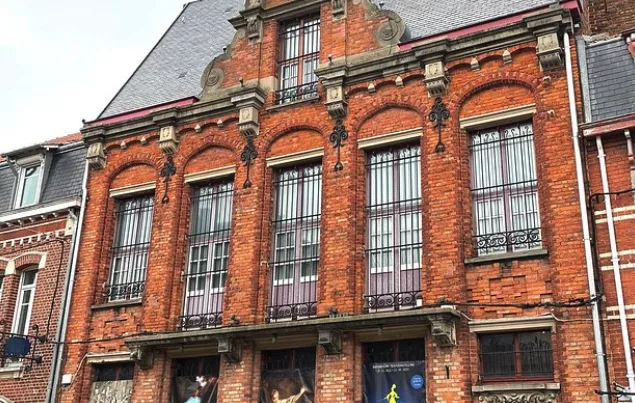
Musée Benoît-De-Puydt
ARMENTIERES
Situated along the Lys River near the Belgian border, Armentières is a town rich in history and cultural heritage. Known as the “Cité de la Toile” due to its historic textile industry, the town has transformed over the years while preserving its unique character.
Begin your exploration at the Grand-Place, the town’s central square, where you’ll find the impressive Town Hall and its Belfry, a UNESCO World Heritage site. Designed by architect Louis-Marie Cordonnier and completed in 1934, the 67-metre-high belfry offers panoramic views of the surrounding area.
Nearby, the Église Saint-Vaast stands as a testament to the town’s resilience, having been rebuilt after World War 1. For a taste of local history and flavor, visit the Brasserie Motte-Cordonnier, a historic brewery established in 1650, now open to the public for tours and tastings.
Nature enthusiasts will appreciate Les Prés du Hem, a 120-hectare recreational park featuring a large lake, water sports, walking trails, and a bird sanctuary. It’s an ideal spot for families and those seeking outdoor activities.
With its blend of historical landmarks, cultural events, and natural beauty, Armentières offers a memorable experience for visitors exploring the Hauts-de-France region.
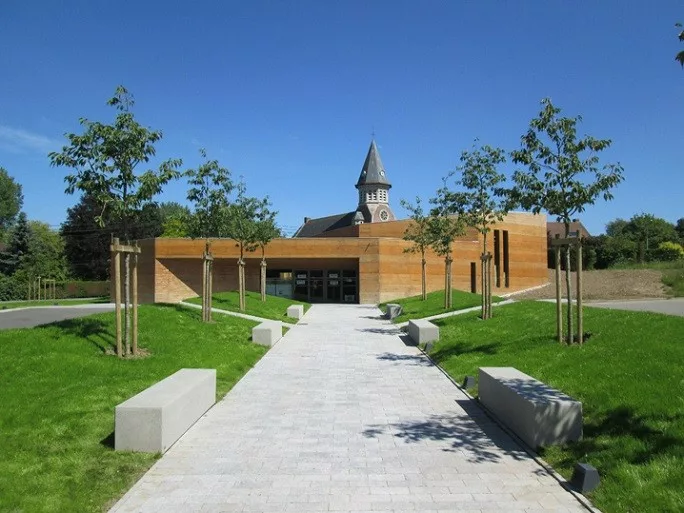
The Nearby Australian WW1 museum in Fromelles
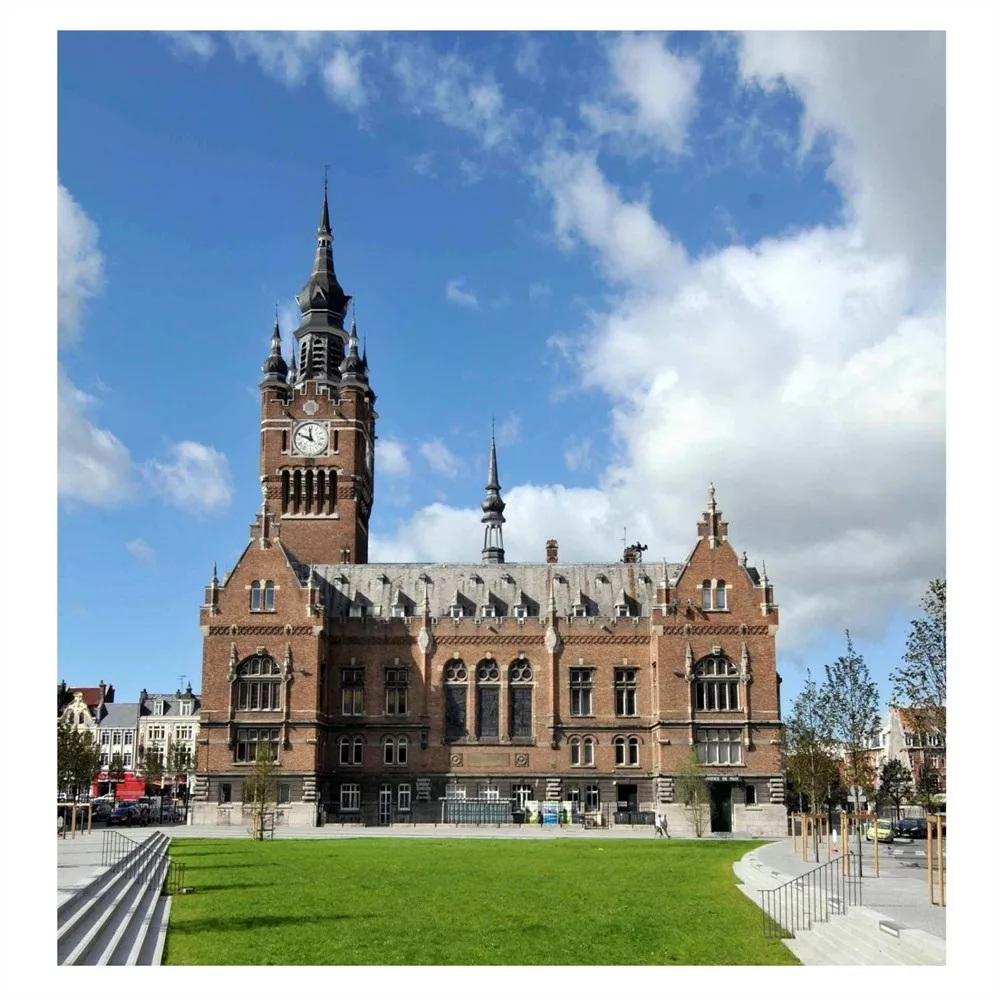
Armentieres Belfry
